On 16th April 2020 41,000 lightning strikes occurred in India, causing 89 deaths from 11 States in which Rajasthan alone having 25 deaths in a single day, whereas 32 died in Bihar and 16 people died in Madhya Pradesh .On 25th June 2020, 83 people died in Bihar & 24 people died in Uttar Pradesh due to lightning strike. Above two events are evidence for the one of the silent killer among all natural calamities is lightning strike. In India since 2005 every year more than 2,000 people will die due to lightning strike. In India North Eastern, Central and South Indian states are more prone for lightning strike, and they are Bihar, Orissa, Uttar Pradesh, Rajasthan, Madhya Pradesh, Maharashtra, Andhra Pradesh, Karnataka and Telangana. Marathawada area of Maharashtra has highest death incidence in India (Annually > 300 deaths) followed by North Eastern part of India.

According to National Crime Records Bureau there were 8,684 deaths of human by Natural calamities in 2016. Among them 38.2% deaths are due to lightning strike, 15.4% deaths are due to Heat and sun stroke, 8.9 % deaths are due to flood. One more study indicates that among natural calamity deaths 40% are due to lightning strike, 24% are due to extreme rain fall, 20% are due to extreme warm weather and 15% are due to extreme cold weather conditions, indicating lightning strike is the largest contributor of natural calamity related deaths in India .Deaths are more in rural part compared to urban parts and most of them were taken shelter under the tree. In sex differentiation male deaths are more compared to female due to more outdoor exposure of male as a part of occupation. Among people farmers and livestock care takers with animals are first victims in lightning strike due to more outdoor exposure.So lightning strike awareness is the need of the hour for the safety of humans as well as animals especially those who are at outdoor work involving animal husbandry and Agriculture.
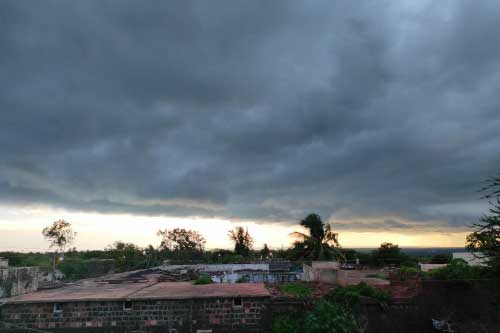
Every year 26,000 people will die due to lightning strike in world. In India according to National crime records bureau (NCRB) 2,500 people succumb to death due to lightning strike. In United States death rate due to lightning strike is due to less number of people working in outdoor area.Pre monsoon months like April and in monsoon June month is the peak of lightning incidence month.
Following table shows number of human deaths in particular years in India
|
S.NO |
YEAR |
Deaths |
|
1 |
2009 |
2,113 |
|
2 |
2010 |
2,622 |
|
3 |
2011 |
2,550 |
|
4 |
2012 | 2,263 |
| 5 | 2013 |
2,833 |
|
6 |
2014 | 2,582 |
|
7 |
2015 |
2,641 |
| 8 | 2016 |
1,489 |
|
9 |
2017 | 2,057 |
| 10 | 2018 |
2,300 |
|
11 |
2019 | 1,311 |
| 12 | 2020 |
206… |
Effect of lightning strike on animal husbandry in India
According to Research Paper by Global lightning death fatalities by Ronald L Holle in 2016 in India every year 1,755 animals death are due to lightning strike. According to some experts the death rate in animals due to lightning strike is approximately six times than that of human deaths. Among animals Ruminants are more prone and mice have less risk for lightning incidence. Every year thousands of sheep and goat are die due to lightning strike with or without shepherd’s death reported in India. In India death of bullocks with or without farmers, death of cattle, buffalo especially grazing livestock having more reported incidences, even Zoo animal deaths due to lightning strike are reported, but still its neglected event in relation to more animals death and huge economical loss compared to other natural calamities like flood, earth quake etc. Again in human deaths 70% deaths are related to farmers, agriculture labors and livestock caretakers. Risk is more to farm community due to more outdoor exposure. Revenue Department issues compensation of INR 4, 00,000 to 5, 00,000 for human death and INR 25,000 for Bullock/cow/buffalo/bull and INR 5,000 for Sheep and Goat for lightning strike deaths by State Government. Even though Government is giving exgretia still also lot of loss to farmers in terms of animals and also loss of life for farmers, farm labors, livestock caretakers is big loss to country.So creating awareness is the need of the hour to save the life of farming community as well as animals.
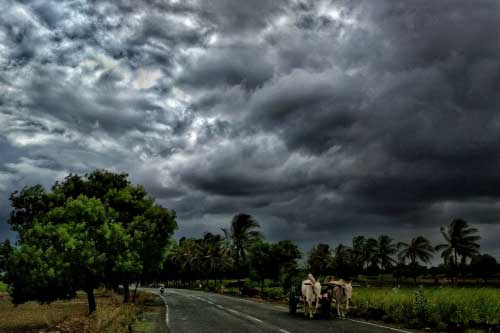
Role of veterinarian in lightning strike awareness
Veterinarian is the only Government Gazetted Officer who gives service to farmers door step. Veterinarians always had good interaction with farmers and livestock caretakers during daily routine activities like sick animal treatment, vaccination, deworming etc. So veterinarians should initiate the extension activities and awareness programmes related to lightning strike for farmers during animal health camps, vaccination camps, Kisan samparka sabha, and Gram sandarshana like departmental activities along with routine work. Another important work is by Conducting Post-mortem examination of dead animals due lightning strike and related activities to support the farmers in getting the Exgretia amount as per Government Orders, also writing awareness articles in local news papers in Regional languages and by giving awareness talks in Radio and Television about preventive measures on lightning strike including treatment of survival animal.

Precaution measures against lightning strike to safeguard the human and animal life.
- Whenever there are thick black colored clouds are seen farmers, agriculture labors especially livestock farmers with animals should move to safe places like to home or indoor environment.
- While raining doesn’t take shelter under trees, because wet and tall trees are good conductors of electricity, so they will attract the lightning strikes.
- Agriculture wet fields also acts as good conductors of electricity during rain. So working in the field should be avoided during rainy as well as thick cloudy environment, grazing of animals should be avoided.
- Animals should not be tied to electricity pole or any metal pole in rainy as well as cloudy environment.
- No human or animal should be in the water body during rainy as well as cloudy environment.
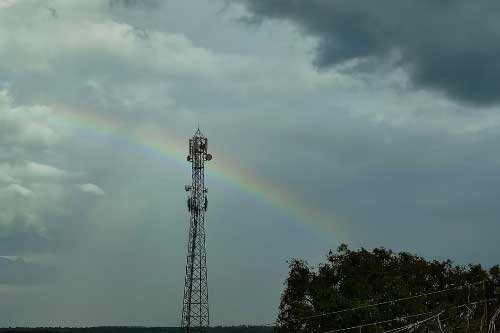
In cloudy environment human and animals should be at least 100 meters away from mobile towers, electric wires and transformers Pic Credit: Shrishail Patil - Deactivate or Switch off the electrical instruments as soon as heavy rain, thunder and lightning likely to occur.
- Avoid touching of metal objects like metal wire or pipes during rain, even don’t take shower bath during heavy rain.
- More than 2 floor buildings should be adopted with safety lightning rod, avoid standing near window and doors.
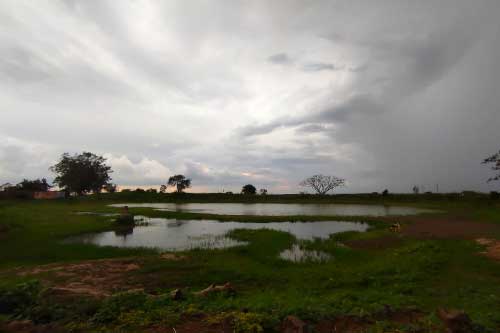
Water bodies will attract lightning, so in cloudy environment going near water bodies should be avoided. Pic Credit: Shrishail Patil - No insulator materials will gives protection against the lightning strike, so indoor environment only saves the life. If you are in the field then quickly acquire the lowest profile by crouching down so that you should not be the target for lightning because lightning always hits the taller objects.
- Agriculture work like ploughing, sowing should not be done in thick heavy cloudy environment; even without rain lightning strike can occurs.
- Avoid open animal shelter in open grounds and in the top of hills in rainy season especially in cloudy environment and also avoid cattle shed repair.
- Carrying metal rods and umbrella increases the risk of lightning strike, avoid contact with bicycle, and farm metal equipments, tractors, motorcycles.
- Don’t tie animals to tall trees; keep animals away from water bodies, solar plants, mobile towers. These things will increases the risk of lightning strike.
- During heavy raining seek shelter in building but don’t touch any metal pipes, wires, switch off all electrical instruments if you take shelter in car don’t touch any metal parts.
- Don’t allow children to play in ground during cloudy environment, avoid outdoor activities during cloudy weather.
- Areas like animal shed, ware houses, Agricultural markets, cottage industries, intensive labors working areas like special economical zones should be adopted with safety lightning rods with protective measures.
References
- NDMA Guidelines Govt Of India 2018
- Lightning fatalities over India : 1979-2011 Omvir Singh and Jagadish Singh
- Mid- Monsoon 2019, LIGHTNING REPORT 2019The effects of lightning and simulated lightning on tissue of animals. By James Raley Howard, lll, D V M.
- Culture and safety against Lightning– An Indian prospective. By Dr Laxmi Narasimha and Dr DVS Bhagavanulu. International Roundtable on Lightning Protection. 22-27 May 2007 Colombo Sri Lanka.
- Lightning the sailent killer. By Shivani Gupta, 2019/07/26 11:40 GMT
- Lightning News India Today. 26/06/2020. 07:21 IST
- Mongabay series: Environment & Health. By Subash Ghosh. Dated 06/03/2019
- gaonconnection.com Akshit Sangomla. Dated 18/04/2019
- downtoearth.org.in
- Pics credit: Shrishail Patil and Kumar Hugar.


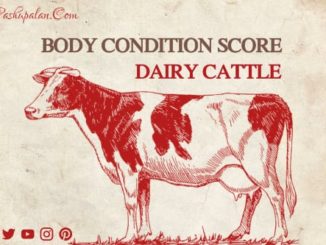
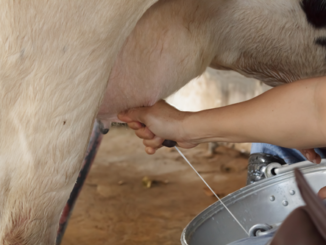


Very Informative article sir
Very good article
Very informative
Very nice information
Very informative sir
Good Article
Very good article
Good article for farmers
Good Article
Article dedicated to farmers and veterinarians…
Very good article
Nice article for farmers
Nice article
Good Article sir
Very nice work dear…keep writing and sharing valuable information for us…
very good information sir
Very useful article for all especially for farmers and Shepherds. Preventive measures should be followed. Role of veterinarians is very nicely explained.
Article use for formers..
Very good information sir
Nice article sir
Informative and need of the hour article
Nice article anna, especially very useful to vets to pass on information to needy farmers in turn…
One of the best article
Very informative article sir
Nice article…very much informative ..
Yhe article helps in awarding farmers or the cattle reares for protecting their animals by the naturally accouring accidents. Thank you for your valuable knowledge sir.
Sir undeful article and useful to Youngers
very much needed information to reach farmers
Very useful article for the farmers
Good information sir…
Very useful article sir
Helpfull
nice articale
Good Article
Informative article.
Very informative sir
Very informative sir !
Good informative writing
This Knowledge helpful for farmers
They have to Adopt this Knowledge
It can save Many Poor People life, because they Only work in field even in Rain
Very informative and useful for farmers as well as vets
बहूत अच्छा है information..
Nice article
One of the best article, keep it up
Nice article sir
Nic and good article sir
Very good information..
Informative article sir
Nice sir very informative
Nice information on lightning Awareness
Found ur article very interesting and effective sir…
Very good information in this article… 👌👌👌